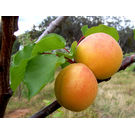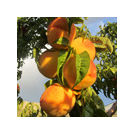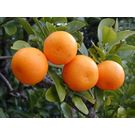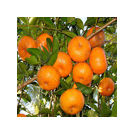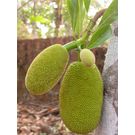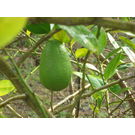Green Grapes Plant

Description
Botanical name: Vitis
Plant type: Fruit
Sun exposure: Full Sun
Soil type: Any
Soil pH: Slightly Acidic to Neutral
Grapes, a long season crop, are often ignored in home gardens, and yet are one of the most widely produced fruits in the world.
Grapevines not only produce sweet and versatile fruits, they add an element of drama to a garden or landscape. They are vigorous growers, and with the proper pruning, they will produce fruit with ease and can last longer than 30 years.
There are three different types of grapes: American (V. labrusca), European (V. viniferia), and North American native Muscadine (V. rotundifolia). American grapes are the most cold-hardy, while European grapes, usually more for wine than the table, do well in warm, dry, Mediterranean type zones. Hybrids are available. Thick skinned Muscadines thrive in the South.
Make sure you purchase grape vines from a reputable nursery. Vigorous, 1-year-old plants are best. Smaller, sometimes weaker, 1-year-old plants are often held over by the nursery to grow another year and are then sold as 2-year-old stock. Obtain certified virus-free stock when possible.
Planting
Plant dormant, bare-root grape vines in the early spring.
Construct a trellis or arbor before planting. Grape vines will need to be trained to some sort of support to grow upward. This will also cut the risk of disease.
Most grape varieties are self-fertile. To be sure, ask when you are buying vines if you will need more than one plant to for pollination.
Before planting grapevines, soak their roots in water for two or three hours.
Select a site with full sun. If you don't have a spot with full sun, make sure it at least gets morning sun. A small amount of afternoon shade won't hurt. Your soil needs to be deep, well-drained, and loose. You also need good air circulation.
Space vines 6 to 10 feet apart (16 feet for muscadines).
For each vine, dig a planting hole 12 inches deep and 12 inches wide. Fill with 4 inches of topsoil. Trim off broken roots and set the vine into the hole slightly deeper than it grew in the nursery. Cover the roots with 6 inches of soil and tamp down. Fill with the remaining soil, but don't tamp this down.
Prune the top back to two or three buds at planting time.
Water at time of planting.
Care
In the first couple of years, the vine should not be allowed to produce fruit. It needs to strengthen its root system before it can support the extra weight of fruit.
Pruning is important. Not only would vines run rampant without control, but canes will only produce fruit once. Prune annually when vines are dormant, in March or April. This is before the buds start to swell, but when winter damage is apparent.
Don't be afraid to remove at least 90 percent of the previous season's growth. This will ensure a higher quality product. Remember, the more you prune, the more grapes you will have.
In the first year, cut back all buds except for 2 or 3. Then, select a couple of strong canes and cut back the rest. Make sure the remaining canes are fastened to the support.
In the second year, prune back all canes. Leave a couple of buds on each of the arms. Remove flower clusters as they form.
Do not fertilize in the first year unless you have problem soil. Fertilize lightly in the second year of growth.
Use mulch to keep an even amount of moisture around the vines.
A mesh net is useful in keeping birds away from budding fruit.
Pests
Aphids
Japanese Beetles
Powdery Mildew
Black Rot
Harvest/Storage
If grapes aren’t ripening, pinch back some of the foliage to let in more sunlight.
Grapes will not continue ripening once picked from the vine. Test a few to see if they are too your liking before harvesting, usually in late summer-early fall.
Grapes can be stored for up to six weeks in the cellar, but grapes can absorb the odors of other fruits and vegetables, so keep them separate. Use cardboard boxes or crates lined with clean, dry straw. Separate bunches with straw or sawdust. Check often for spoilage.
You may also be interested in
Look for Similar Items by Category
- Home > Fruit Plants > Grapes


